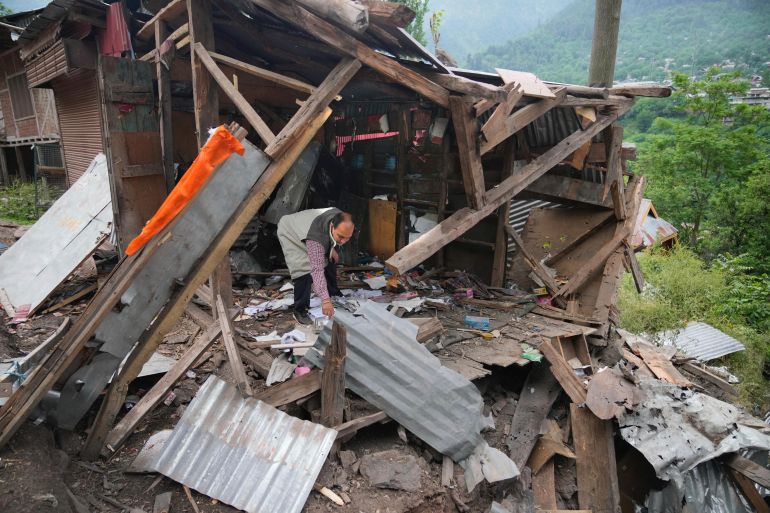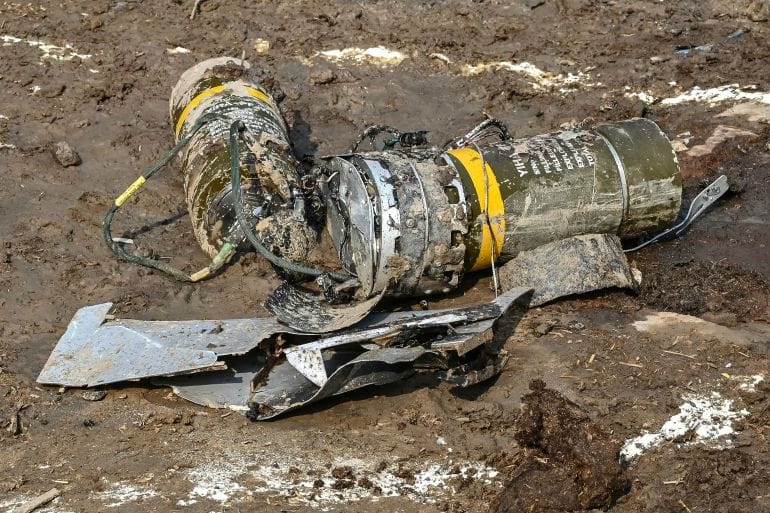Did Pakistan shoot down five Indian fighter jets? What we know | India-Pakistan Tensions News
Four days after India and Pakistan reached a ceasefire after a rapid escalation in a military conflict between them, key differences between their battlefield claims remain unresolved.
Among them is Pakistan’s assertion that it shot down five Indian fighter jets on May 7, the first day of fighting, in response to Indian attacks on its territory.
As a battle of narratives takes over from the actual fighting, Al Jazeera takes stock of what we know about that claim, and why, if true, it matters.
What happened?
Tensions between India and Pakistan erupted into military confrontation on May 7 after India bombed nine sites across six cities in Pakistan and Pakistan-administered Kashmir.
India said it had struck what it called “terrorist infrastructure” in response to the deadly April 22 killings of tourists by suspected rebels in India-administered Kashmir.
Gunmen on April 22 shot dead 25 male tourists and a local pony rider in the picturesque meadows of Pahalgam, triggering outrage and calls for revenge in India. New Delhi blamed Pakistan for supporting the fighters responsible for the attack, a charge Islamabad denied.
Pakistan said Indian forces on May 7 struck two cities in Pakistan-administered Kashmir and four sites in the country’s largest province, Punjab. It said civilians were killed in the attacks. India’s Defence Minister Rajnath Singh rejected the Pakistani claims, reiterating that Indian forces “struck only those who harmed our innocents”.
Over the next four days, the two nuclear-armed neighbours were engaged in tit-for-tat strikes on each other’s airbases, while unleashing drones into each other’s territories.
Amid fears of a nuclear exchange, top officials from the United States made calls to Indian and Pakistani officials to end the conflict.
On May 10, US President Donald Trump announced that Washington had successfully mediated a ceasefire between the nuclear-armed neighbours. Despite initial accusations of violations by both sides, the ceasefire has continued to hold so far.
Pakistan reported on Tuesday that Indian strikes killed at least 51 people, including 11 soldiers and several children, while India has said at least five military personnel and 16 civilians died.

What has Pakistan claimed?
Speaking to Al Jazeera shortly after the May 7 attacks, Pakistan’s Information Minister Attaullah Tarar said Islamabad, in retaliation, had shot down five Indian jets, a drone, and many quadcopters.
Later in the day, Pakistan’s military spokesperson Ahmed Sharif Chaudhry said the warplanes had all been downed inside Indian territory, and aircraft from neither side crossed into the other’s territory during the attacks – an assertion India seconded.
“Neither India nor Pakistan had any need to send their own aircraft out of their own national airspace,” British defence analyst Michael Clarke told Al Jazeera.
“Their standoff weapons all had long enough ranges to reach their evident targets whilst flying in their own airspace,” Clarke, who is a visiting professor in the Department of War Studies at King’s College, London, added.
On Friday, Pakistan’s Air Vice Marshal Aurangzeb Ahmed claimed that among the five downed aircraft were three Rafales, a MiG-29, and an Su-30, providing electronic signatures of the aircraft, in addition to the exact locations where the planes were hit.
The battle between Pakistani and Indian jets lasted for just over an hour, Ahmed, who is also the deputy chief of operations, told reporters.
He stated that the confrontation featured at least 60 Indian aircraft, among them 14 French-made Rafales, while Pakistan deployed 42 “hi-tech aircraft,” including American F-16s and Chinese JF-17s and J-10s.
What has been India’s response?
After Chinese state news outlet The Global Times wrote that Pakistan had brought down Indian fighter planes, India’s embassy in China described the report as “disinformation”.
However, beyond that, New Delhi has not formally confirmed or denied the reports.
Asked specifically whether Pakistan had managed to down Indian jets, India’s Director General of Air Operations AK Bharti avoided a direct answer.
“We are in a combat scenario and losses are a part of it,” he said. “As for details, at this time I would not like to comment on that as we are still in combat and give advantage to the adversary. All our pilots are back home.”
What else do we know?
Beyond the official accounts, local and international media outlets have reported different versions of Pakistan’s claims of downing the jets.
According to Indian security sources who spoke to Al Jazeera, three fighter jets crashed inside India-controlled territory.
They did not confirm which country the warplanes belonged to. However, with neither side suggesting that Pakistani planes crossed into Indian airspace, any debris in Indian-controlled territory likely comes from an Indian plane.
Reuters news agency also reported, citing four government sources in Indian-administered Kashmir, that three fighter jets crashed in the region. Reports in CNN said that at least two jets crashed, while a French source told the US outlet that at least one Rafale jet had been shot down.
Photos taken by AP news agency photo journalists showed debris of an aircraft in the Pulwama district in Indian-administered Kashmir.
Will both sides ever agree on what happened?
Defence analyst Clarke said if India has indeed lost a Rafale, that would certainly be “embarrassing”.
“If it came down inside Indian territory, which must be the case if one was destroyed, then India will want to keep it only as a rumour for as long as possible,” he added.
“India has said that “losses” are inevitable, and that is probably as near as they will get to admitting a specific aircraft loss for a while.”






